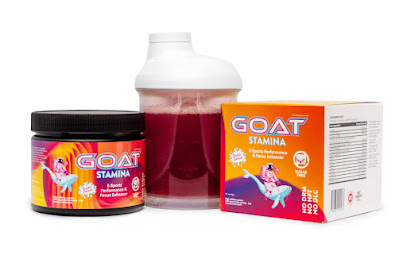To live in a food interdependent manner, a person would need to rely on various strategies and practices that emphasize self-sufficiency in food production and minimize dependence on external food sources. While achieving complete food independence may be challenging, individuals can adopt certain practices to become more self-reliant in their food needs. Here are some essential elements for living in a food interdependent way:
Agricultural Skills: Understanding basic agricultural practices is essential for growing crops and cultivating food. Knowledge of planting, harvesting, soil health, pest management, and irrigation is crucial for successful food production.
Gardening Space: Access to suitable land or space for gardening is necessary for growing fruits, vegetables, and herbs. This space can be a backyard garden, a community garden plot, or even indoor gardening using containers.
Seeds and Planting Materials: Acquiring high-quality seeds and planting materials is essential for starting a productive garden. Saving seeds from harvested crops allows for self-sustaining seed sources.
Water Source: Reliable access to water for irrigation is vital for plant growth. This can be through rainwater harvesting, wells, irrigation systems, or water-saving techniques.
Crop Diversity: Growing a variety of crops helps ensure a balanced diet and reduces the risk of complete crop failure due to environmental factors or pests.
Food Preservation: Knowledge of food preservation techniques, such as canning, drying, fermenting, and freezing, is valuable for storing surplus produce to use during non-growing seasons.
Livestock and Animal Husbandry: Raising livestock, such as chickens for eggs, goats for milk, or bees for honey, can further supplement food sources.
Composting and Soil Enrichment: Composting organic waste helps enrich the soil, promoting healthy plant growth and reducing the need for synthetic fertilizers.
Foraging and Wild Edibles: Familiarity with local wild edibles and foraging can add to the diversity of food sources.
Food Sharing and Exchange: Building relationships with neighbors and the community can enable food sharing and exchange, allowing for a more diverse diet and reducing waste.
Sustainable Practices: Adopting sustainable and regenerative agricultural practices, such as permaculture and agroforestry, can enhance the ecosystem's resilience and promote long-term food security.
It's important to note that achieving complete food independence may not be realistic or desirable for everyone. Depending on factors like climate, available space, time, and personal preferences, individuals may find a balance between producing some of their food and supporting local food systems for the rest. Food interdependence can still involve supporting local farmers, participating in community-supported agriculture (CSA) programs, and contributing to food resilience within one's community.
Living in a food interdependent manner around the year would require careful planning and adaptation to different seasons and growing conditions. Here's a general outline of how a person could theoretically achieve food interdependence throughout the year:
Spring:
- Start planting early-season crops like leafy greens, radishes, and peas.
- Utilize greenhouse or indoor gardening for starting seeds and growing temperature-sensitive crops.
- Continue composting to enrich the soil for the upcoming growing season.
Summer:
- Harvest early-season crops.
- Plant warm-season crops such as tomatoes, peppers, cucumbers, and squash.
- Preserve surplus produce through canning, drying, and freezing for winter months.
- Care for livestock and collect eggs or milk if raising animals.
Fall:
- Harvest warm-season crops before the first frost.
- Plant cool-season crops like carrots, beets, and broccoli for fall and winter harvest.
- Continue food preservation efforts to store crops for the colder months.
Winter:
- Depend on preserved foods, including canned goods, dried fruits, and frozen vegetables.
- Utilize cold frames or indoor gardening to grow some fresh produce during the winter.
- Continue caring for livestock if applicable.
Throughout the year, the individual would engage in composting to maintain soil fertility, forage for wild edibles when available, and maintain a diverse garden to meet nutritional needs. They would also exchange surplus food with neighbors and participate in local food-sharing initiatives to enhance their food interdependence.
It's important to note that achieving food interdependence for an entire year would require knowledge, skills, and dedication to sustainable practices. Additionally, factors such as climate, growing region, and available resources would play a significant role in determining the feasibility of year-round self-sufficiency in food production. Many people choose to combine homegrown produce with locally sourced foods to achieve a balanced and sustainable approach to food security.
How much food a normal person needs in a year?
The amount of food a normal person needs in a year can vary based on several factors, including age, gender, activity level, health status, and individual metabolism. Additionally, cultural and dietary preferences also play a role in determining food needs. However, general guidelines for daily caloric intake and nutrient requirements can help estimate the annual food needs for an average person.
The following are rough estimates for daily caloric intake and nutrient requirements for adults based on the Dietary Reference Intakes (DRIs) established by health organizations:
Calories: The average daily caloric intake for an adult typically ranges from 1,800 to 2,400 calories, depending on factors such as age, gender, and physical activity level.
Protein: Protein requirements vary based on individual factors, but the Recommended Dietary Allowance (RDA) for adults is around 0.8 grams of protein per kilogram of body weight. For an average adult weighing 70 kilograms (154 pounds), this would be approximately 56 grams of protein per day.
Carbohydrates and Fats: The majority of daily caloric intake should come from carbohydrates and fats. Carbohydrates should provide around 45% to 65% of total daily calories, and fats should make up about 20% to 35%.
Vitamins and Minerals: The required intake of vitamins and minerals can vary widely, and it is best to refer to specific recommendations based on age and gender.
It's important to note that individual nutritional needs may vary, and these estimates are general guidelines. Pregnant or breastfeeding individuals, athletes, and people with specific medical conditions may have different nutritional requirements.
To calculate the annual food needs for an average person, we can use a mid-range daily caloric intake of 2,000 calories as an example:
2,000 calories/day x 365 days = 730,000 calories per year.
How much land?
1.Land for garden
The amount of land surface needed to achieve food interdependence for one person can vary widely depending on factors such as dietary preferences, climate, growing conditions, and the level of self-sufficiency desired. Achieving complete food interdependence on a small piece of land is challenging, and it often requires careful planning, crop selection, and efficient use of resources.
For a general estimation, a well-managed home garden for one person may require approximately 500 to 1,000 square meters (about 5,400 to 10,800 square feet) of land. This size can allow for a diverse range of crops, including fruits, vegetables, herbs, and some space for livestock such as chickens or small animals for eggs or milk.
Keep in mind that this is a rough estimate, and the actual land size needed can vary significantly based on the factors mentioned earlier. In regions with a milder climate, it might be possible to extend the growing season and cultivate more crops throughout the year. In contrast, areas with harsher climates may require larger spaces for greenhouse gardening or other methods of extending the growing season.
Additionally, some individuals choose to supplement their homegrown produce with food from local farmers' markets or community-supported agriculture (CSA) programs. This approach can reduce the land requirement for self-sufficiency while still supporting local and sustainable food sources.
Ultimately, achieving food interdependence involves finding a balance that aligns with personal goals, available resources, and the local environment. It may not be feasible or necessary for everyone to be completely self-sufficient in food production, and supporting local food systems can also contribute to a more sustainable and resilient food supply.
2.Land for meat
The land surface needed for meat production as part of food interdependence will depend on several factors, including the type of livestock, the scale of production, and the animals' grazing or housing requirements. Raising livestock for meat requires more land compared to growing plant-based foods. Here are some considerations for estimating the land surface needed for meat production:
Grazing Livestock: If the livestock are grazed on pasture, the amount of land needed will depend on the number of animals, the size of the pasture, and the quality of the grazing area. Rotational grazing and efficient pasture management can help optimize land use.
Feedlot or Confined Systems: For intensive meat production in feedlots or confined animal feeding operations (CAFOs), less land may be required per animal compared to grazing systems. However, these systems have higher resource and environmental impacts.
Type of Livestock: The land requirements can vary significantly based on the type of livestock being raised. For example, raising cattle typically requires more land per unit of meat produced compared to poultry or pigs.
Sustainable Livestock Farming: Sustainable and regenerative livestock farming practices, such as rotational grazing and agroforestry, can optimize land use and improve environmental sustainability.
Complementary with Crop Production: In some cases, integrating livestock into crop production systems can provide mutual benefits. For example, using animal manure as fertilizer for crops can improve soil health.
Local Climate and Forage Availability: The local climate and availability of natural forage can influence the land needed for livestock grazing.
Estimating the exact land surface needed for meat production is challenging due to the many variables involved. However, a rough estimate for raising livestock for personal meat consumption might be several hectares (1 hectare is approximately 2.5 acres) for rotational grazing or a smaller area for more intensive systems. It's important to balance livestock numbers with available land to avoid overgrazing and degradation of natural resources.
It's worth mentioning that meat production has a larger environmental footprint compared to plant-based foods. For those seeking more sustainable options, reducing meat consumption or choosing meat from regenerative and sustainable farming practices can help minimize the land and environmental impact.
The potential cost savings and economic benefits of living food interdependently
The potential cost savings and economic benefits of living food interdependently can vary based on several factors, including the region, the scale of self-sufficiency, the cost of living, and individual preferences. While food interdependence can provide some cost savings, it's important to recognize that achieving complete self-sufficiency in food production is challenging and may not be practical or feasible for everyone.
Here are some potential economic benefits and cost savings associated with living food interdependently:
Reduced Grocery Expenses: Growing one's fruits, vegetables, and herbs can reduce the need to purchase these items from grocery stores or markets, resulting in lower grocery expenses.
Preserving Seasonal Surpluses: Food preservation techniques, such as canning, drying, and freezing, allow individuals to store surplus produce when it is abundant and cheaper, enabling cost savings during leaner months.
Lower Transportation Costs: By producing food locally, individuals can save on transportation costs associated with importing food from distant regions.
Avoiding Price Fluctuations: Food prices can be subject to fluctuations due to factors such as supply chain disruptions, weather events, and global market dynamics. Growing one's food can help avoid the impact of sudden price increases.
Enhanced Food Security: Being less reliant on external food sources can enhance food security, especially during times of crisis or emergencies.
Personal Health Savings: Homegrown produce may be fresher and more nutritious than store-bought equivalents, potentially leading to better health outcomes and reduced healthcare costs.
However, it's important to consider the initial costs and ongoing expenses associated with establishing and maintaining a food interdependent lifestyle. These may include:
Initial Investments: Setting up a garden, obtaining gardening tools, purchasing seeds or livestock, and implementing sustainable practices may require upfront investments.
Time and Effort: Growing and maintaining a garden, caring for livestock, and preserving food can be time-consuming and labor-intensive.
Infrastructure and Resources: Depending on the region, individuals may need to invest in irrigation systems, fencing, animal shelters, or greenhouse structures.
Learning Curve: Gaining the necessary agricultural knowledge and skills may involve attending workshops, courses, or seeking guidance from experienced growers.
Risk and Uncertainty: Agricultural practices are subject to environmental factors, pests, and diseases, which can introduce risks and uncertainties into the food production process.
It's essential to approach food interdependence with realistic expectations and to find a balance that aligns with individual goals, resources, and lifestyle. Many people choose to supplement homegrown produce with store-bought items or support local farmers through farmers' markets or community-supported agriculture (CSA) programs. Ultimately, food interdependence can be a rewarding lifestyle choice, but it requires careful planning, dedication, and ongoing effort to achieve its economic and self-sufficiency benefits.















.png)







.png)
.png)
No comments:
Post a Comment